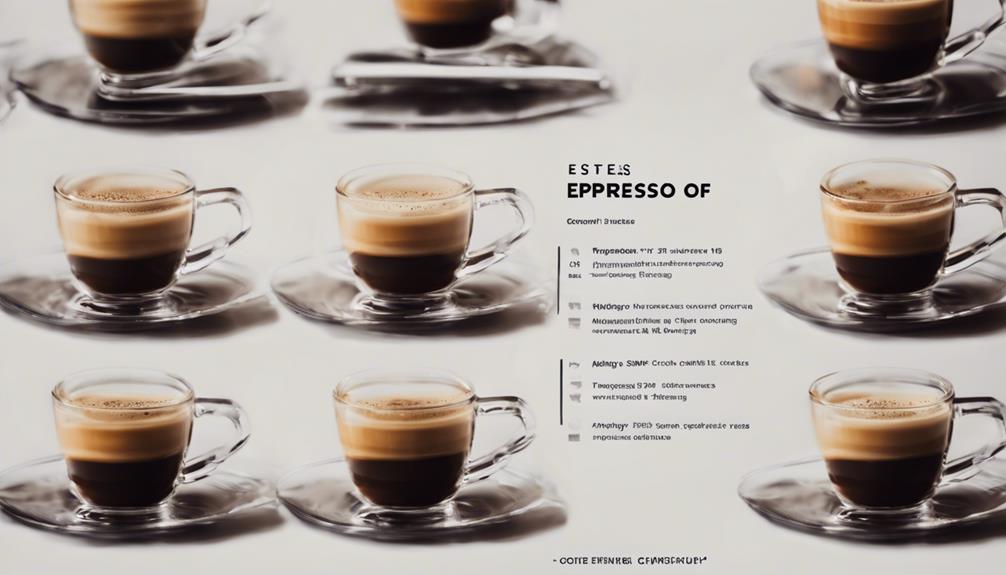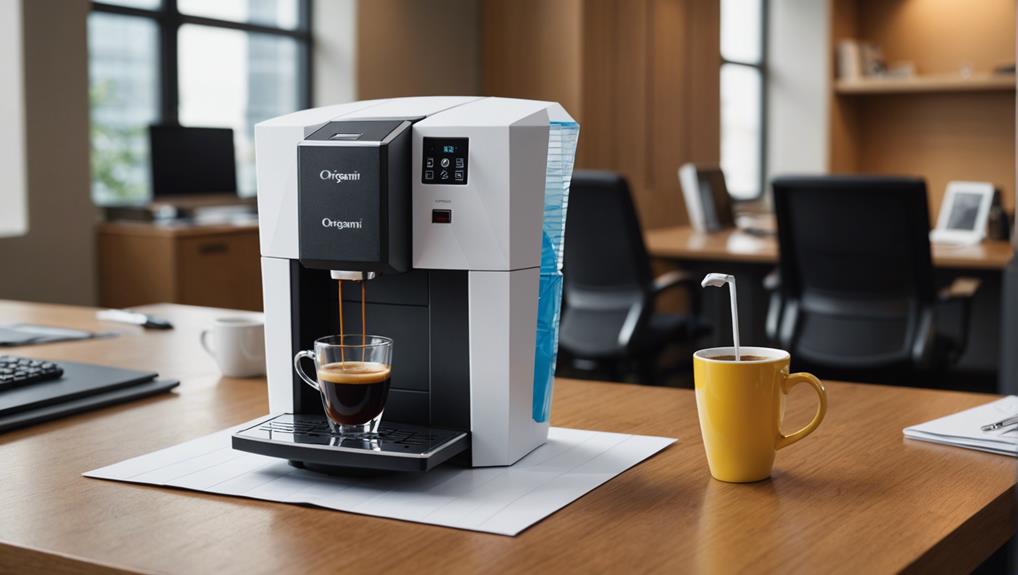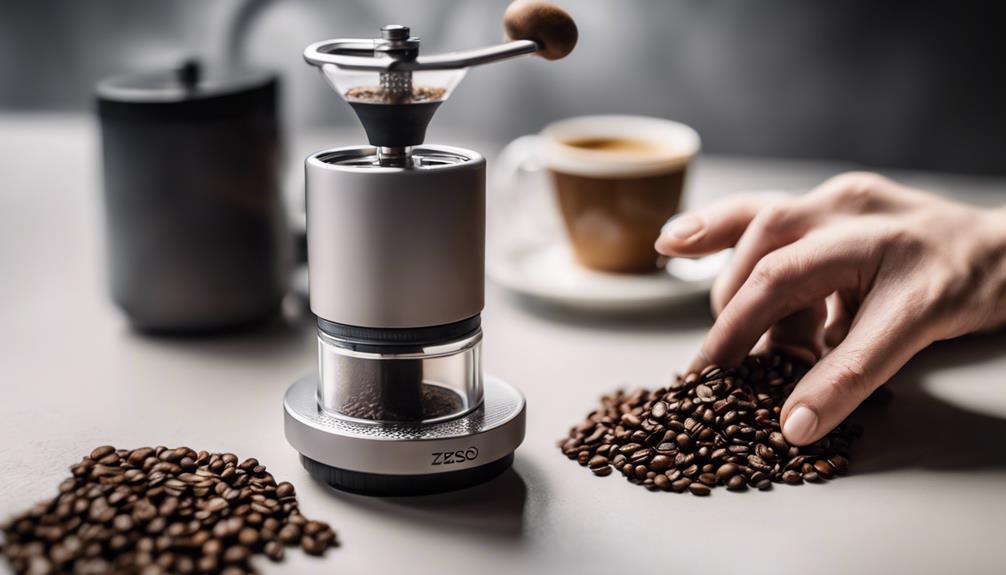To effectively use Espresso with Compose in 10 steps, start by creating UI components using the Compose-Test Rule. Carry out actions such as clicking or scrolling with Espresso to test interactions. Check element attributes for validation purposes. Make use of Compose’s testing APIs to improve interactions. Manage UI assertions effectively with Espresso. Ensure your app is working correctly with Jetpack Compose. Automate UI testing for better efficiency. Accurately test UI interactions with Espresso. Finally, execute Espresso tests to validate your UI. These steps will help you streamline testing processes and ensure your app’s functionality. For more details on integrating Espresso with Compose, visit our website.
Key Takeaways
- Set up ComposeTestRule for launching activity.
- Use Espresso's onView to locate Compose UI elements.
- Simulate user interactions like clicks and text input.
- Verify UI elements for correct behavior and display.
- Leverage Espresso's synchronization for reliable testing.
Identify UI Elements With Compose-Test Rule
To identify UI elements efficiently in Jetpack Compose testing, utilize the Compose-Test Rule provided by Espresso. This rule serves as an essential component in setting up the testing environment for Jetpack Compose apps.
By leveraging the Compose-Test Rule, developers can easily interact with UI elements during testing. The primary function of this rule is to simplify the process of identifying and manipulating UI elements within the Jetpack Compose framework. It plays a key role in launching the activity under test and ensuring that UI elements are matched accurately in Compose testing scenarios.
Perform Actions Like Clicking or Scrolling

When testing user interactions in Compose with Espresso, you can easily simulate actions like clicking on buttons or scrolling through lists. This allows you to efficiently automate UI interactions and validate app behavior.
User Interaction Testing
You can easily simulate user interactions like clicking or scrolling through screens in Compose with the help of Espresso. When conducting user interaction testing in Compose, Espresso allows you to simulate various user actions on UI elements seamlessly.
By utilizing Espresso's ViewMatchers and ViewActions, you can locate and interact with different Compose UI elements during your testing process. This interaction testing with Compose elements in Espresso provides a thorough experience for developers who are already accustomed to using Espresso for View-based UI testing.
Moreover, Espresso enables you to handle interactions with both Compose elements and traditional View-based elements within the same test scenario. This capability streamlines the testing process and ensures all-encompassing coverage of all UI components in your application.
Espresso Testing Benefits
Performing actions like clicking or scrolling on UI elements in Jetpack Compose is made effortless with Espresso testing benefits. When leveraging Espresso for Compose testing, you can interact with UI elements seamlessly by utilizing Test Tag identifiers.
The fluent API provided by Espresso simplifies the process of writing tests that mimic user interactions with Compose components. By incorporating Espresso into your testing strategy, you can verify the accuracy of UI behavior and guarantee that your app responds appropriately to user actions.
Additionally, Espresso's integration with Compose allows for thorough UI testing, ensuring that your app's functionality and user experience meet expectations.
- Effortless Interaction: Easily perform actions like clicking and scrolling on Compose UI elements.
- Test Tag Identifiers: Utilize identifiers to interact with specific UI elements during testing.
- Fluent API: Write tests smoothly and efficiently with Espresso's user-friendly API.
- UI Behavior Verification: Verify correct UI behavior responses through Espresso testing.
- Thorough Testing: Conduct detailed UI testing to validate app functionality and user experience.
Verify Elements' Attributes for Validation

To validate elements' attributes in Jetpack Compose using Espresso, access elements through onView and Matchers. Espresso provides a vital way to verify attributes like text content, visibility, enabled state, and content description of Compose elements in your UI tests. By leveraging Espresso, you can assert that elements exhibit the correct attributes as expected, ensuring the accuracy of your app's user interface. Espresso Matchers play an essential role in enabling you to check specific attributes of Compose elements for precise validation. Verifying elements' attributes through Espresso guarantees that your UI elements behave and appear as intended in your application.
| Attribute | Description |
|---|---|
| Text | Verify the displayed text on an element |
| Visibility | Check if the element is visible or hidden |
| Enabled | Confirm if the element is enabled or disabled |
| Content Description | Validate the content description of an element |
| Custom Attributes | Check for any custom attributes set on an element |
Utilize Compose's Testing APIS for Interactions

When exploring how Espresso works with Compose, shifting to discussing how to utilize Compose's Testing APIs for interactions opens up new possibilities for testing UI elements effectively.
Compose's testing APIs provide a seamless way to interact with UI elements, whether you're asserting user interactions or simulating them. Here are some key points to explore:
- Integration with Compose: These APIs effortlessly integrate with both Compose and View-based elements, enhancing testing capabilities.
- Perform Actions: Developers can use Compose's testing APIs to execute various actions such as clicking buttons, entering text, and verifying UI element states.
- Automatic Synchronization: The testing APIs in Compose automatically synchronize with the UI, ensuring precise and reliable interactions during testing.
- Espresso Integration: Leveraging Compose's testing APIs with Espresso further enhances the testing capabilities of Android apps built with Jetpack Compose.
- Comprehensive Testing: With these APIs, you can thoroughly examine the functionality and behavior of your app's UI elements.
Handle UI Assertions With Espresso

When handling UI assertions with Espresso in Jetpack Compose testing, you'll focus on verifying the state of UI elements like text values and visibility.
By utilizing Espresso's onView() and perform() functions, you can assert properties of Composables efficiently.
Understanding UI testing basics, setting up Espresso correctly, and following assertion best practices are essential for effective UI testing in Jetpack Compose.
UI Testing Basics
Handling UI assertions with Espresso in Jetpack Compose involves interacting with and verifying various UI elements. To master the basics of UI testing in Compose with Espresso, consider the following:
- Utilize Espresso to find and interact with UI elements in your Compose-based app.
- Perform actions like clicking buttons, entering text, and confirming text on Compose UI elements.
- Take advantage of Espresso's fluent API for crafting concise and readable UI tests.
- Use the onView() method to locate UI elements in Compose based on test tags or other attributes.
- Enjoy the seamless integration between Espresso and Compose, empowering you to create robust UI tests for your application.
Espresso Setup Process
To set up Espresso for handling UI assertions with Compose, establish dependencies and define test rules.
Espresso's integration with Compose simplifies UI testing by allowing you to perform UI assertions on Compose elements.
By using Espresso's onView method along with the ComposeTestRule, you can locate and interact with Compose UI elements seamlessly.
This setup process enables you to simulate user actions, such as button clicks, on your Compose UI components, facilitating thorough UI testing for your Android applications.
The defined dependencies and test rules guarantee that your Espresso tests can effectively verify the expected behavior of your Compose-based user interfaces.
Assertion Best Practices
For effective handling of UI assertions in Jetpack Compose testing, leverage Espresso's assertion methods such as `ViewMatchers` and `ViewAssertions`.
When working with Espresso in Compose, keep in mind these assertion best practices:
- Use `ViewMatchers` to pinpoint UI elements by attributes like text, ID, and content description.
- Employ `ViewAssertions` to verify the state and properties of UI elements during testing in Compose.
- Leverage Espresso's `assert` methods to check conditions like visibility, text matches, and enabled state in your Compose UI tests.
Guarantee thorough verification of UI states and properties by handling UI assertions with Espresso in Jetpack Compose testing.
Validate UI Behavior With Espresso Test

You can validate the UI behavior of Jetpack Compose elements efficiently using Espresso tests. Espresso, a powerful UI testing framework for Android, seamlessly integrates with Jetpack Compose to help developers confirm the correct functionality of their UI.
By leveraging Espresso's capabilities, you can interact with and assert on various Compose elements, such as buttons, text fields, and text content. Espresso's onView() method, in conjunction with ComposeTestRule, allows you to find specific Compose elements within your UI for testing purposes.
Through Espresso tests, you can simulate user interactions like clicking buttons, entering text, and verifying expected text content, enabling you to validate the behavior of your Jetpack Compose UI effectively.
Ensure App Functions With Jetpack Compose

Guarantee the robustness and reliability of your app's functionality by effectively leveraging Jetpack Compose's features. When ensuring your app functions seamlessly with Jetpack Compose, consider these key points:
- Espresso Interactions: Use Espresso to interact effortlessly with both View-based elements and Compose components for thorough UI testing.
- ComposeTestRule Integration: Employ the ComposeTestRule to match Jetpack Compose UI elements with Espresso's onView, facilitating efficient UI testing.
- Hybrid App Testing: Test initial states, perform clicks, and verify values across views and Compose elements to ensure smooth app functionality.
- Essential Tools: Leverage Espresso's onView and ComposeTestRule to test interactions between traditional views and Compose elements effectively.
- Interoperability Testing: Conduct interoperability testing to guarantee the seamless integration of Espresso and Jetpack Compose components for comprehensive UI testing processes.
Automate UI Testing Efficiently With Steps

Automating UI testing with a systematic approach enhances the efficiency of testing processes for Jetpack Compose applications.
Espresso, integrated seamlessly with Jetpack Compose, streamlines UI testing by providing a platform to interact with Compose UI elements effectively. With Espresso, writing concise and readable UI tests for Jetpack Compose layouts becomes straightforward. This tool equips developers with matchers and actions to locate and engage with Compose UI elements, ensuring comprehensive UI testing coverage.
By utilizing Espresso, you can validate attributes of UI elements, execute user actions such as clicks and text inputs, and affirm UI states accurately in Jetpack Compose applications. Moreover, Espresso's synchronization mechanism plays a pivotal role in ensuring that UI interactions occur at the appropriate times, thereby boosting the reliability of UI testing for Compose applications.
Embracing Espresso for UI testing promises enhanced efficiency and robustness in the testing process for Jetpack Compose projects.
Test UI Interactions With Espresso

To test UI interactions with Espresso, you'll need to grasp the basics of Espresso UI testing and be proficient in writing Espresso test cases.
Understanding how to utilize Espresso's onView function to interact with Compose UI elements is essential for effective testing.
Espresso UI Testing Basics
Using Espresso for UI testing in Jetpack Compose allows you to easily simulate and test user interactions within your app's interface.
When delving into Espresso UI Testing Basics, keep in mind the following:
- Espresso is an Android framework designed for UI testing.
- It interacts with UI elements in Jetpack Compose by matching and performing actions on components.
- The onView matcher in Espresso locates and interacts with UI elements in Compose tests.
- Espresso seamlessly synchronizes with the UI thread during Compose testing for smooth interactions.
- The ability of Espresso to match and interact with UI elements in Compose simplifies UI testing and guarantees accurate behavior verification.
Understanding these basics will be crucial as you proceed to explore how to write Espresso test cases for your Jetpack Compose applications.
Writing Espresso Test Cases
When transitioning from understanding Espresso UI Testing Basics to Writing Espresso Test Cases for Jetpack Compose, you'll learn how to simulate user interactions effectively.
In Espresso test cases for Compose, you can utilize the ComposeTestRule to interact with Compose UI elements seamlessly. By using Espresso's onView method, you can locate and manipulate different UI elements within your tests. This allows you to perform actions like clicking buttons, scrolling through lists, and verifying text displayed on the screen.
Additionally, Espresso offers assertions that enable you to validate the state of UI elements in your Jetpack Compose test cases accurately. Incorporating these user interactions and assertions in your test cases ensures thorough testing of your Compose UI, helping you deliver a robust and reliable application.
Remember to leverage Espresso's capabilities to write comprehensive test cases that cover various user interactions and UI states effectively.
Run Espresso Tests for UI Validation

Running Espresso tests in Compose for UI validation involves utilizing the composeTestRule to launch the activity under test.
When running Espresso tests, you can interact with UI elements, perform clicks, and input text to validate the user interface effectively.
Here are some key points to keep in mind:
- Use the onView function to locate and interact with UI elements in Compose.
- Verify UI elements to confirm they display correctly and perform as expected.
- Perform actions like clicks or text input to simulate user interactions.
- Espresso seamlessly interacts with Compose elements, providing a smooth testing experience.
Running Espresso tests for UI validation in Compose guarantees the app's user interface functions correctly and aligns with user expectations. By incorporating these steps, you can ensure thorough UI validation and enhance the overall quality of your app.
Frequently Asked Questions
Does Espresso Work With Compose?
Espresso works seamlessly with Compose, enhancing UI testing capabilities. Its onView function allows direct interaction with Compose elements for thorough testing.
The ComposeTestRule simplifies view matching, streamlining the testing process. Espresso handles actions like clicks and verifications effortlessly on Compose UI elements.
Through interoperability testing, Espresso guarantees a smooth interaction between itself and Jetpack Compose components, creating a robust testing environment for your app's UI.
What Is the Compose Test Rule?
The Compose Test Rule in Jetpack Compose testing is essential for setting up and tearing down the testing environment efficiently.
By launching the activity under test and synchronizing UI elements automatically, this rule streamlines testing processes.
Annotating test classes with @get:Rule allows developers to utilize this rule effectively, eliminating the need for manual synchronization.
This guarantees accurate testing results and enhances the overall testing experience in Compose.
How Do You Add Test Tags in Compose?
To add test tags in Jetpack Compose, utilize the testTag) modifier on UI elements. This function acts as a unique identifier for testing purposes, helping in locating and interacting with specific elements during automated UI testing.
What Is an Uiautomator?
An UiAutomator is an Android testing framework designed for testing user interface elements and interactions on devices or emulators. It offers APIs to mimic user actions such as button clicks and text input while verifying UI elements.
This framework can access UI components across various apps on the device, making it ideal for testing system-level interactions. By utilizing descriptors like text or content description, UiAutomator can locate and interact with UI elements effectively.
Can I Use Quad Shot Espresso in the 10 Steps of Espresso Compose?
If you are exploring the quad shot espresso, you may wonder if it can be used in the 10 steps of espresso compose. The answer is yes! The quad shot can be a great addition to your espresso composition, adding extra boldness and richness to your drink.
Conclusion
In just 10 simple steps, you can seamlessly integrate Espresso with Compose for efficient UI testing. Make the most of Compose's testing APIs and Espresso's capabilities to guarantee your app functions flawlessly.
With these tools at your disposal, automating UI testing has never been easier. So go ahead, delve into, and experience the power of Espresso and Compose working together in perfect harmony!









